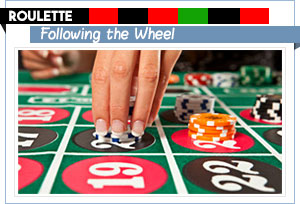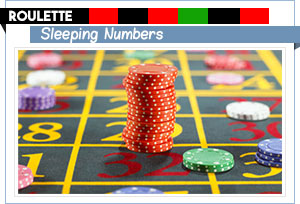You have probably heard the proverb “Nothing ventured, nothing gained”. This aphorism applies in full force to betting on the outcome of casino games as one needs to take some chances if they want to win big. It is also valid in the game of roulette where randomness reigns and winning or losing depends on nothing else but chance.
This is precisely what causes many people to associate this captivating game with reckless gambling. Yet, if you strike up a conversation with a seasoned roulette player, you are likely to notice they are not inclined to take unwarranted risks. Of course, a certain degree of risk is involved in all casino games, roulette included, but taking calculated risks is hardly the same as making rash decisions.
Most experienced roulette players are able to make this distinction, which is why they prefer to incorporate various betting patterns or bet combinations to increase their overall chances of success and reduce the risk of exhausting their bankrolls. Indeed, when combined with adequate bankroll management, betting patterns can greatly diminish the risk of ruin this game of chance comes with.
Knowing how much to bet and what combination of numbers to bet on are the most important ingredients for success at the roulette table. If you are yet to make your first steps towards becoming a successful roulette player, the popular bet combinations and patterns we have covered below may be of some help.
Betting Patterns for Outside Bets
As you probably know already, there are two major categories of bets in roulette. Inside bets are made either on individual numbers or on groups of neighbouring numbers on the layout. Making such bets involves a higher degree of risk. Because of this, less experienced players are generally recommended to make outside bets as the chances of winning consistently with these are greater.
The sub-types that fall into the outside bets category are Red/Black, High/Low, Odd/Even, Columns, and Dozens. Out of these, the first three types pay even money while the last two return 2 to 1. Let us assume you are interested in playing even chances. This is where hedge betting can be a useful approach.
Hedge Betting on Even Chances
Hedge betting means you are placing bets that actually complement each other so that the player can achieve a balance between risk and potential reward. To better demonstrate it, imagine you are willing to risk £10 on the next spin and bet on Odd/Even. A suitable pattern will be to bet £1 on five individual odd numbers and £5 on even.
This would reduce the likelihood of losing the £10 to 14 out of 37 since there will be 12 odd numbers you have not covered, plus the single zero which also causes even-money bets to lose. If any of your individual odd numbers come up, your £1 bet will return at a rate of 35 to 1, which means you will collect £35 and lose £9 on the other five bets, which makes for a net profit of £26. Then again, if an even number comes up (the true odds are 18 to 19), you will break even because you will receive your initial £10 back.
Of course, this was only an example to demonstrate how hedge betting on even-money wagers applies to the game of roulette. Players can come up with similar patterns and adjust the bet sizing so that it fits their own preferences and bankroll size.
Hedge Betting on the Dozens
Such hedge patterns can also be incorporated into your play when betting on the Dozens, each one consisting of twelve consecutive numbers. It is even possible to combine outside bets on the Dozens with inside bets. For instance, you can bet £5 on the first dozen (with numbers 1 through 12) and make five £1 bets on five splits with the remaining numbers 13 through 36 plus the zero.
This way, there will be only 15 numbers you have not covered with your bets so the likelihood of winning will be 15 out of 37. If you win with one of the splits, you will collect £17 in exchange for your £1 bet, lose £4 on the other four splits, and another £5 on the first dozen. If the ball settles on a number from the first dozen, you will receive £10 with a 2 to 1 payout, so your net profit will be £5 due to losing the bets on the five splits. Either way, you are still ahead.
Covering Wheel Sections with Call Bets
Another way to boost your overall chances of success at the roulette table is to place Call bets. These are also known as the French bets and there is a very good reason why – such wagers can be placed only on single-zero wheels in French and European roulette because the number sequence on the wheel in these variations differs from that in American roulette.
Generally, Call bets have higher chances of winning because they cover larger sections of the wheel and are placed in a separate section of the layout, called the racetrack. The latter represents the numbers in the order in which they appear on the wheel. Note, however, that these bets normally involve staking more than one chip.
An example would be the Vousin du Zero wager which covers a total of 17 numbers located between 22 and 25 on the wheel. The sequence of numbers is as follows: 22, 18, 29, 7, 28, 12, 35, 3, 26, 0, 32, 15, 19, 4, 21, 2 and 25. In order to cover all these numbers on the layout, players are required to bet nine chips. Two chips are put on stake on 0, 2 and 3, five chips are bet separately on the splits between 4-7, 12-15, 19-22, 18-21, and 32-35 and two more chips cover the corner of 25, 26, 28 and 29.
Another Call bet is the Tiers du Cylindre which covers about one-third of the entire French wheel as it includes the 12 numbers that are opposite to the zero. These include 27, 13, 36, 11, 30, 8, 23, 10, 5, 24, 16, 33. Players are required to stake a total of six chips, one on each of the six splits – 5-8, 10-11, 13-16, 23-24, 27-30 and 33-36.
The Orphelin bet includes all the remaining eight numbers that are excluded from the Tiers and the Voisins. These make for two “slices” of the wheel, with numbers 17, 34, 6 and 1, 20, 14, 31 and 9, respectively. You need five chips to make an Orphelin bet. Four of those are bet on the splits between 6-9, 14-17, 17-20, and 31-34 while the fifth chip is placed as a Straight Up bet on 1.
Another popular Call bet is the so-called Final bet which covers all numbers ending in the same digit. An example would be a wager covering numbers 3, 13, 23, and 33. You need four chips for this as you bet one chip on each number ending in 3. Note that numbers 0 through 6 will cost you four chips but final bets on numbers 7 through 9 will cost you only three chips because there are no more numbers after 36 in roulette.
By covering larger sections of the wheel, players significantly increase their chances of winning, not to mention the profits will be more substantial since splits, corners, and bets on individual numbers offer a higher return.
Following the Wheel vs. Betting against the Wheel
 In a conversation with experienced roulette players, you may hear them speaking of someone “following the wheel” or someone “betting against the wheel”. There are various trends skilled players may notice when they are betting in a landbased casino. It all has to do with the patterns the ball follows when the dealer tosses it in a specific manner, which is also known as the dealer’s signature.
In a conversation with experienced roulette players, you may hear them speaking of someone “following the wheel” or someone “betting against the wheel”. There are various trends skilled players may notice when they are betting in a landbased casino. It all has to do with the patterns the ball follows when the dealer tosses it in a specific manner, which is also known as the dealer’s signature.
Roulette dealers sometimes involuntarily slip into patterns themselves. When one such dealer spins one black number, for example, there is a high probability of them spinning black five, six or more times during the following rounds. However, recognizing the dealer’s signature is not easy – it normally takes time to get used to it.
The dealer’s signature is usually a combination of different factors that may influence the outcome of the tosses. Some of these include the initial force of the toss and the lateral direction of the ball’s spin. If you come across one such dealer, the best course of action would be to follow the wheel and adjust your bets on the basis of the trend the dealer displays.
Note that you can follow the wheel to your benefit only when your dealer tosses the ball in a consistent, repetitive manner. Following the wheel will not work if there is a tangible variance in the way the ball is launched because patterns will be extremely difficult to detect. An example of following the wheel would be when you bet on black after this colour has hit four or five times in a row. This might speak about a dealer’s inclination towards black.
Betting against the wheel is precisely the opposite but is a more suitable approach when the dealer’s signature involves pronounced variations. Such dealers toss the ball more randomly and even if there is a pattern, it lasts for a short while. To bet against the wheel, however, you need to be able to recognize when the dealer will break out of their pattern so that you can bet on the opposite outcome. Therefore, if the dealer is generally random in the tosses but has spun four high numbers in a row, you might want to bet on a low number next.
If you wish to adopt this approach, it is of crucial importance to be able to detect patterns, such as sequences of six odd numbers, six high or six red numbers. Once six numbers of the same type have been spun, you can bet against the wheel on the opposite. If the last winning numbers have been low like 5, 7, 3, and 11, you might want to bet on the second and third dozens for the next spin.
Recognizing “Sleeping” Numbers
 Seasoned players would often recommend roulette novices to be more flexible with their bets. This is not to say they should deviate drastically from their system, throw all caution to the wind, and start making reckless bets. Being flexible at the roulette table means that players should be able to detect patterns, recognize the signature of the dealer, and use it to their advantage.
Seasoned players would often recommend roulette novices to be more flexible with their bets. This is not to say they should deviate drastically from their system, throw all caution to the wind, and start making reckless bets. Being flexible at the roulette table means that players should be able to detect patterns, recognize the signature of the dealer, and use it to their advantage.
Being observant may help you detect when to switch from betting against the wheel to following the wheel. It may also enable you to spot the so-called “sleeping” or “cold” numbers and stake on them instead of betting on repeating or “hot” numbers. To achieve this, the player needs to pay more attention to the numbers which have not appeared for the first thirty tosses of the ball. A good observer is likely to notice that usually for a course of thirty spins, there are about ten to twelve numbers which remain dormant. Of course, to be able to do so one is required to identify and note the results of the first thirty spins.
For example, a player may have noticed the dealer favours a given segment of the wheel so that numbers 32 Red, 15 Black, 19 Red, 4 Black, and 21 Red have not appeared over the course of thirty spins. Provided there is a change of dealers, you might want to place smaller, Straight Up bets on these numbers. It would be more likely for these dormant numbers to hit because the new dealer will have a different signature.
Of course, this is impossible to do when playing online where the outcomes of the spins are indeed random because there is no human element to influence the results. The good news is that well-known software developers have created roulette variations where players can benefit from various statistics including hot and cold numbers, results on previous spins, and ratios between red/black and odd/even winning numbers.
One word of caution – players should not attach themselves to sleeping numbers for too long because such numbers sometimes remain dormant for prolonged periods of time, i.e. more than thirty spins. Some roulette experts have observed numbers who have slept for more than a hundred spins. Most of all, remember that all numbers have equal chances of winning on any individual spin. If your sleepers do not wake up over the course of several spins, you might want to bet on a different outcome to protect your bankroll.
Applying the Shotwell Betting System
The Shotwell betting system gained popularity in the late 1970s but remains in use to this day. This betting system was designed with the number sequence of the double-zero wheel in mind. It revolves around the idea players can increase their chances of a win by evenly distributing their bets around the wheel. The numbers you bet on are evenly spaced on the wheel so that regardless of where the ball ends up, you still have substantial chances of scoring a win.
The Shotwell system generally utilizes six-number combinations and players bet on one of them in conjunction with four Straight Up bets. One betting unit is wagered on a six-line bet and four units are staked on each of the individual numbers associated with the respective combination. The six-line combinations and the individual numbers they associate with are the following:
| Six-Number Combinations | Associated Straight Up Bets |
|---|---|
| 1 through 6 | 20, 26, 8, 10 |
| 4 through 9 | 13, 14, 15, 10 |
| 10 through 15 | 16, 17, 18, 28 |
| 13 through 18 | 11, 12, 27, 28 |
| 19 through 24 | 1, 2, 4, 26 |
| 28 through 33 | 00, 22, 24, 35 |
| 31 through 36 | 0,00, 29, 30 |
As you can see, this system enables players to cover as many as ten numbers with five betting units only. It practically is irrelevant which combination you choose because no matter where the ball settles, it will never be more than three pockets away from one of the numbers you have bet on. The strength of this system results from the fact that players practically have a 25% chance of winning on each spin because they have covered every 4th number on the wheel. The trouble with this system is that it does nothing to decrease the house edge. Players are recommended to use the Shotwell with caution – only winning with their Straight Up bets consistently can ensure they get ahead and balance off their losses.
Applying the Red Betting System
The Red betting system exploits the fact the third column of the table’s layout consists of eight red numbers (3, 9, 12, 18, 21, 27, 30, 36) and only four black ones (6, 15, 24, 33). This is the case in both American and European roulette which renders the system suitable for either variation of the game. This system calls for making only two bets – one bet on the third column and another one on black to cover the remaining four numbers in this column. It is up to players to decide what base unit to use and how many units each of their two bets should consist of.
Let’s assume you decide to bet £10 on the third column and £20 on black. The next spin of the wheel may result in several possible outcomes. If the ball lands on a red number from the third column, you will collect £20 with the column bet and lose the £20 on black, which means you will break even.
Should the ball settle on a black number from the third column, you win with both bets for a total net profit of £40. If black from the first or the second columns hits, you lose £10 with your third column bet and collect £20 from your even-money bet. You lose your entire £30 on both bets whenever the ball lands on the zero pocket(s) or when red from the first or the second columns hits. Similarly to the Shotwell, the Red betting system cannot transform roulette from a negative to a positive expectation game simply because the type of bets you make does not alter the house edge.
Betting on the Action Numbers
This betting pattern is based on the idea that roulette wheels are the same in that their numbers are distributed in the same manner. Thus, the numbers of single-zero wheels are spread in the same fashion while double-zero wheels utilize their own number sequence. Some players try to exploit this sequencing by betting on the so-called “action” numbers. On a double-zero wheel, the action number sequence is as follow – 10, 11, 12, 13, 14, 15, 17, 18, 20, 21, 28, 29, 30, 31, 32, and 33.
These numbers are either adjacent on the wheel or are located in close proximity to one another. Therefore, when the ball spins around the rim of the wheel, it always “flirts” with one these numbers, which translates in greater chances of a winning bet. There are only two exceptions with numbers 14 and 33. If you look closely, you will surely notice that 14 is separated from the other action numbers with two pockets on one side and four pockets on the other side. Similarly, number 33 has no gaps on one side and four gaps on the other.
Now that we have listed all the action numbers, it is time to explain how to use them to your advantage. As you have probably noticed yourself, numbers 10, 11, 12, 13, 14 and 15 are located next to each other on the layout and form a Six-line bet – you can place three chips between 10 and 13 to cover them. Another Six-line bet of three chips can be made on numbers 28, 29, 30, 31, 32, and 33 which also are adjacent on the layout. You position your three chips between 28 and 31. Finally, one chip is to be bet on the corner of numbers 17, 18, 20 and 21. You have covered all sixteen action numbers with seven chips.
As was mentioned earlier, 14 and 33 are separated from other action numbers with more gaps. Some seasoned roulette players like to bet an additional, eight chip as an insurance on the line between 1, 2, 3, 4, 5 and 6. Number 4 is key for this last bet because it effectively reduces the wider gap between 14 and 33. You may have eight chips at risk but you have covered 22 out of 38 possible outcomes. Since your numbers are now distributed evenly on the wheel, the chances of the ball landing in a winning pocket are greater.
- American Roulette
- Best Real-Money Roulette Sites
- Best Roulette Systems
- Double Action Roulette
- Double Ball Roulette
- European Roulette
- French Roulette
- High Roller Roulette
- Most Popular Roulette Games
- Phenomenal Live Roulette (Luckystreak)
- Play Roulette Online
- Progressive Jackpot Roulette
- Roulette Odds and Probabilities
- Roulette Rules
- Roulette Strategies
- Roulette Variations
- Ultimate Roulette (Ezugi) Means Extreme Casino Fun













